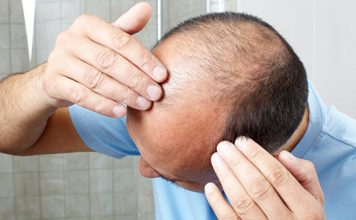A chemical designed to mimic the smell of sandalwood has the power to stimulate hair growth in humans, according to a new study.
一项新研究显示,一种用于模仿檀香气味的化学物质具有刺激人类头发生长的能力。
Though the research was undertaken using scalp tissue in a laboratory, the scientists behind the discovery say they could be on the cusp of effectively treating hair loss.
虽然这项研究是在实验室中利用头皮组织进行的,但发现该功能的科学家称,他们或许正处在有效治疗脱发的边缘。
As trials are already underway to assess how this product performs in human volunteers, the team say they are "not far" from making the transition from the lab to the baldness clinic.
由于目前已展开测试以评估这种产品在人类志愿者中的效用,研究小组称,距离实现该疗法从实验室试验过渡到谢顶诊所应用已经“不远”了。
"This is actually a rather amazing finding," said Ralf Paus, a scientist at the University of Manchester who led the research.
领导这项研究的曼彻斯特大学教授拉尔夫·波斯表示:“这其实是一项非常惊人的发现。”
"This is the first time ever it has been shown the remodeling of a normal human mini-organ (a hair) can be regulated by a simple, cosmetically widely-used odorant."
“这是首次有研究表明,对人类正常微型器官(头发)的改造可以由一种简单的、广泛用于化妆品的香味剂来调节。”
To achieve these results, the scientists tapped into an ancient chemical pathway found in hair follicles that allowed them to both slow down the death of these precious structures and promote their growth.
研究中,科学家利用了在毛囊中发现的一种古老的化学反应机制,这种机制令他们既能减缓毛发的死亡速度,又能促进其生长。

They did this using an unlikely substance known as Sandalore, a chemical produced to recreate the smell of sandalwood, which is often used to make perfumes and soaps.
他们利用一种人造檀香来实现这一点。人造檀香是一种能够产生类似檀香的气味的化学物质,经常被用于制作香水和肥皂。
Smell is a sensation triggered when molecules of "odorant" chemicals are recognised by special cells in the nose, but the processes underpinning this phenomenon are not confined to the nasal passages.
鼻子能够闻到某种气味,是指鼻子里的特殊细胞识别出“有气味”的化学物质的分子,但是支持这一现象的过程并不局限于鼻腔通道。
In fact, the same chemical pathways help regulate a range of other cell functions in the body, including hair growth.
事实上,同样的化学反应途径有助于调节人体的一系列其他细胞功能,包括毛发生长。
The researchers focused on a receptor called OR2AT4, which is known to be stimulated by Sandalore, and which can be found in the outer layer of hair follicles.
研究人员重点研究了一种名为OR2AT4的受体,这种能够被人造檀香刺激的受体可以在毛囊外层被找到。
They found that by applying their synthetic sandalwood odorant to scalp tissue they could both increase hair growth and decrease cell death. This was enough to generate the "substantial, clinically relevant functional hair growth effects", as documented in their Nature Communications paper.
研究人员发现,将他们合成的檀香气味剂用于头皮组织,既能够促进头发生长,也能够减少细胞死亡。正如他们发表于《自然·通讯》杂志的论文所写的,这足以产生“实质性的、与临床相关的功能性毛发生长效应”。
Intriguingly, the results suggest that human hair follicles can "smell", in the sense that they make use of ancient smell receptors to control key functions such as growth.
有趣的是,研究结果显示,人类的毛囊能够“闻气味”,它们利用古老的嗅觉受体来控制毛发生长等关键功能。












